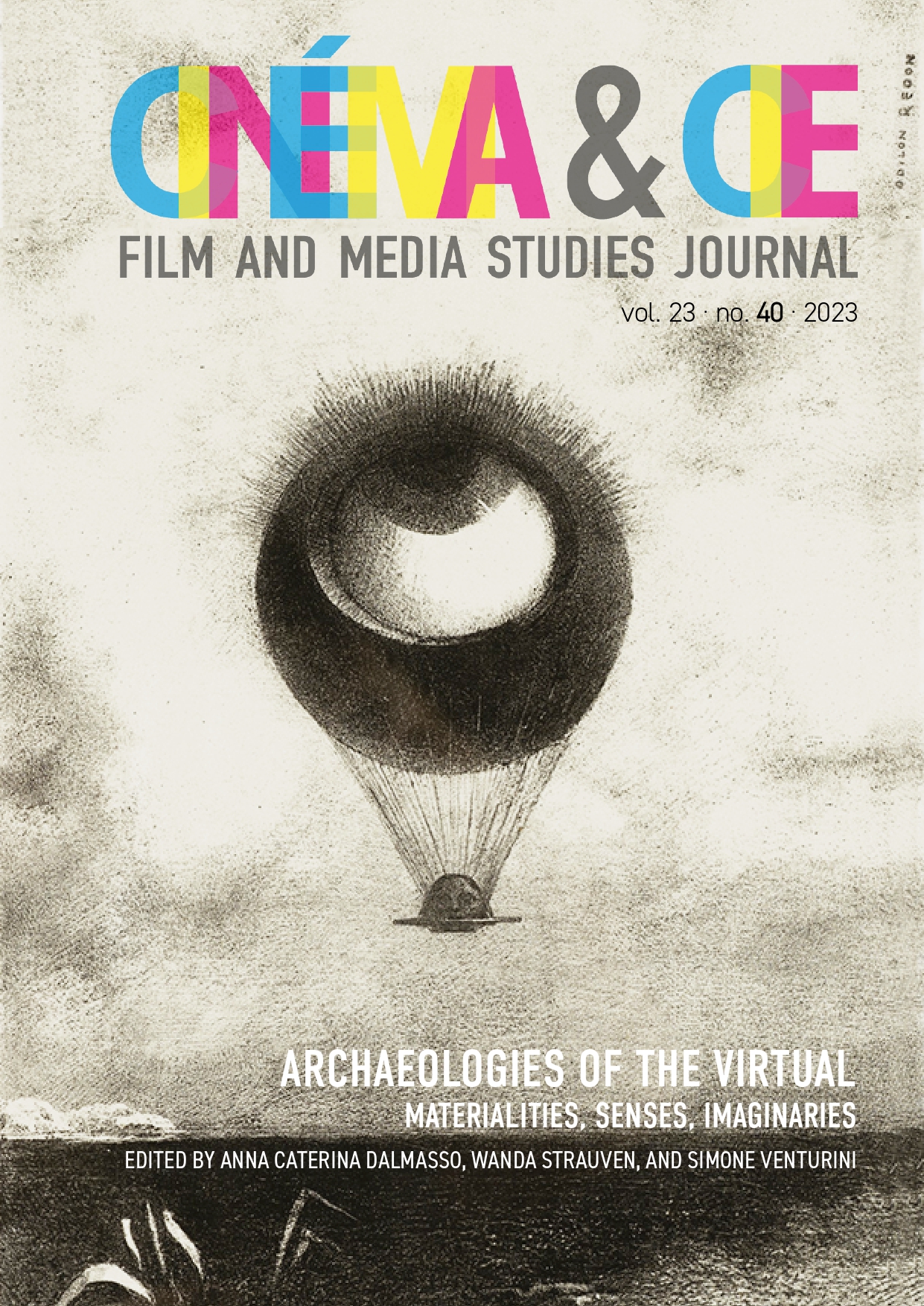Topologies of the Virtual. Spaces, Images, and Bodies in Early Modern Choir Stalls
DOI:
https://doi.org/10.54103/2036-461X/19463Keywords:
Media Archaeology, Early Modernity, Topologies, Trompe-l’oeil, EmbeddingAbstract
Early Modern choir stalls are spaces within spaces, they separate spheres such as public and restricted, profane and holy, as well as open and closed. Members of the convents perform their daily devotions here and are assigned to respective seats. They are installed, according to the name of the place “stalla”. The inlaid decoration on each seat reiterates the specific spatial and religious formation. This article wants to explore how choir stalls immerse their users and viewers in pictorial and religious environments.
References
Alberti, Leon Battista. 2011. On Painting. A New Translation and Critical Edition, edited by Rocco Sinisgalli. Cambridge: Cambridge University Press.
Bach, Friedrich Teja. 2007. “Filippo Brunelleschi and the Fat Woodcarver. The anthropological experiment of perspective and the paradigm of the picture as inlay.” Anthropology and Aesthetics (51): 157–174.
Balke, Friedrich, Bernhard Siegert, and Joseph Vogl. 2015. “Editorial.” Archiv für Mediengeschichte (15): 5–9.
Baudrillard, Jean. 1988. “The Trompe-L’Œil.” In Calligram. Essays in New Art History from France, edited by Norman Bryson, 53–62. Cambridge: Cambridge University Press.
Eickhoff, Hajo. 1993. Himmelsthron und Schaukelstuhl. Die Geschichte des Sitzens. München: Carl Hanser Verlag.
Geraci, Robert M. 2013. “A Virtual Assembly: Constructing Religion out of Zeros and Ones.” In The Oxford Handbook of Virtuality, edited by Mark Grimshaw, 323–336. Oxford: Oxford University Press.
Grau, Oliver. 2003. Virtual Art. From Illusion to Immersion. Cambridge MA: MIT Press.
Kühtreiber, Thomas, and Heike Schlie. 2017. “Holz als Geschichtsstoff: Das Materielle in den Dingkulturen.“ MEMO Medieval and Early Modern Material Culture Online 1: 1–11. doi: 10.25536/20170101
Mauss, Marcel. 1973. “Techniques of the Body.” Economy and Society 2 (1): 70–88.
Pastoureau, Michel. 1993. “Introduction à la Symbolique Médiévale du Bois.” In: L’arbre. Histoire naturelle et symbolique de l’arbre, du bois et du fruit au Moyen Âge, edited by Michel Pastoureau, 25–40. Paris: Le Léopard d’Or.
Randolph, Adrian W. B. 2014. Touching Objects. Intimate Experiences of Italian Fifteenth-Century Art. New Haven: Yale University Press.
Siegert, Bernhard. 2015. “Figures of Self-Reference: A Media Genealogy of the Trompe-l’œil in Seventeenth-Century Dutch Still Life.” In: Cultural Techniques. Grids, Filters, Doors, and Other Articulations of the Real, 164–191. New York: Fordham University Press.
Simmel, Georg. 1994. “The Picture Frame: An Aesthetic Study.” Theory, Culture & Society 11 (1):11–17.
Urban, Martin. 1953. “Chorgestühl“ In: Reallexikon zur Deutschen Kunstgeschichte, III, columns 514–537.
Vavra, Elisabeth. 2005. “Vorwort” In: Virtuelle Räume. Raumwahrnehmung und Raumvorstellung im Mittelalter, edited by Elisabeth Vavra, IX–X. Berlin: Akademie-Verlag.
Downloads
Published
How to Cite
Issue
Section
License
Copyright (c) 2023 Maja-Lisa Müller

This work is licensed under a Creative Commons Attribution 4.0 International License.





